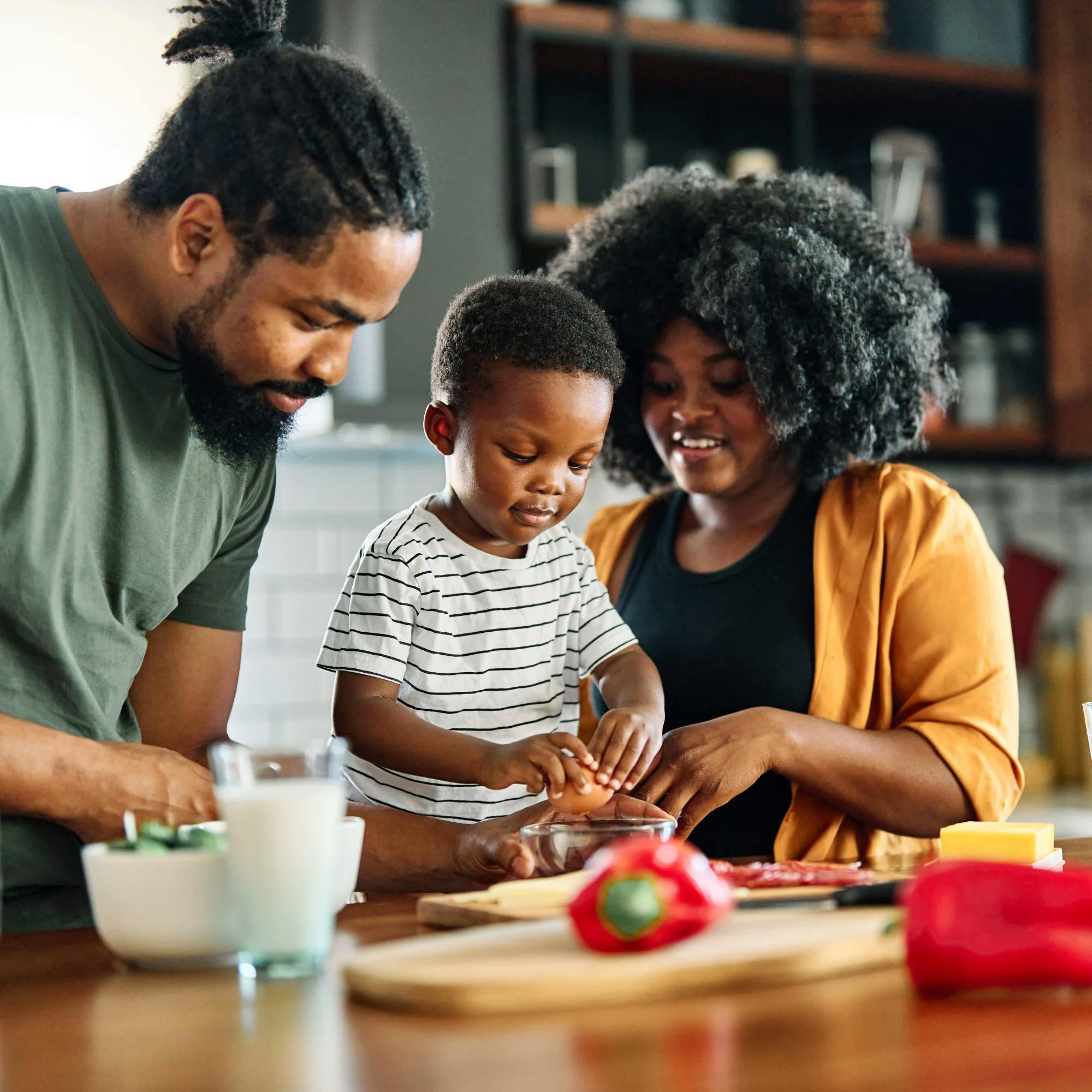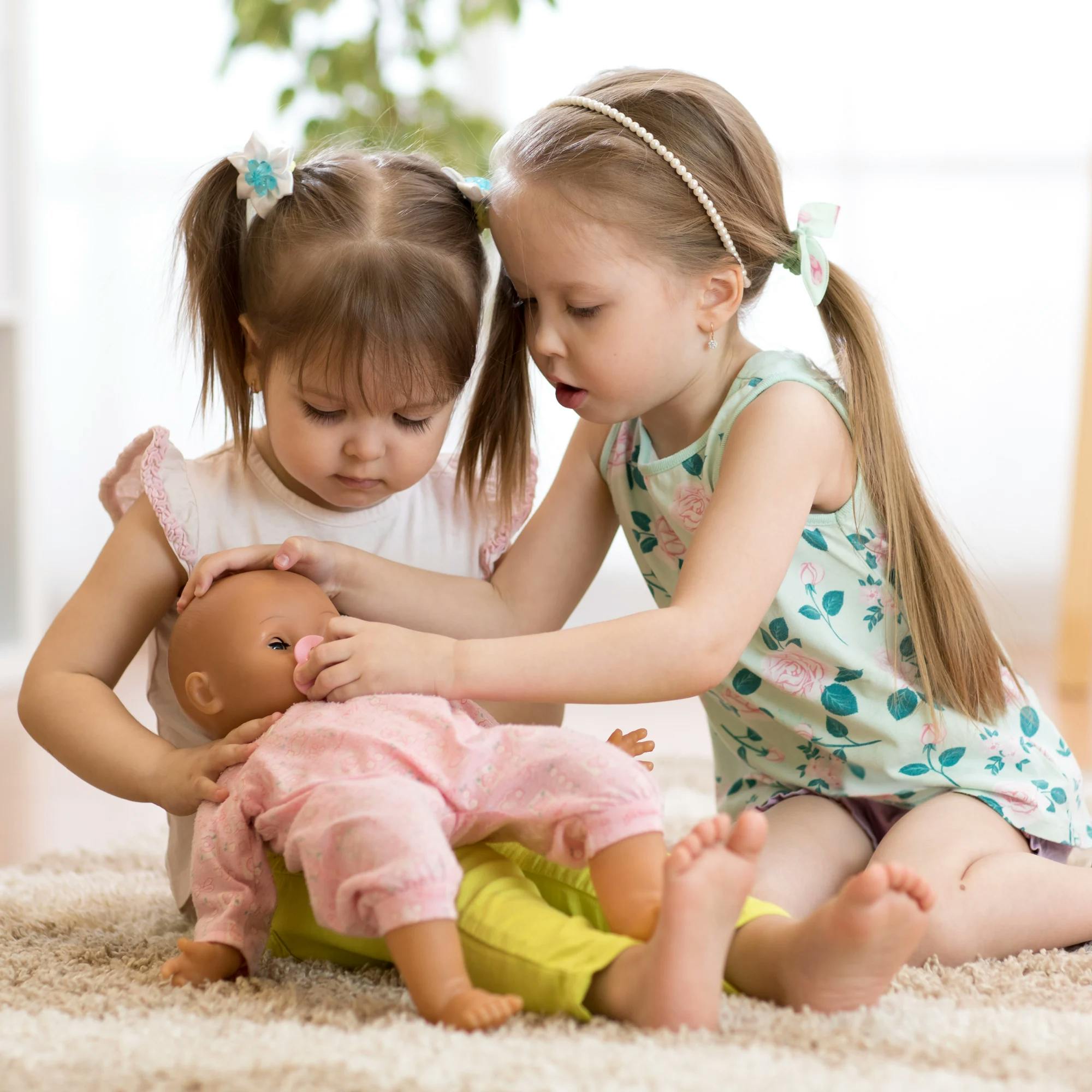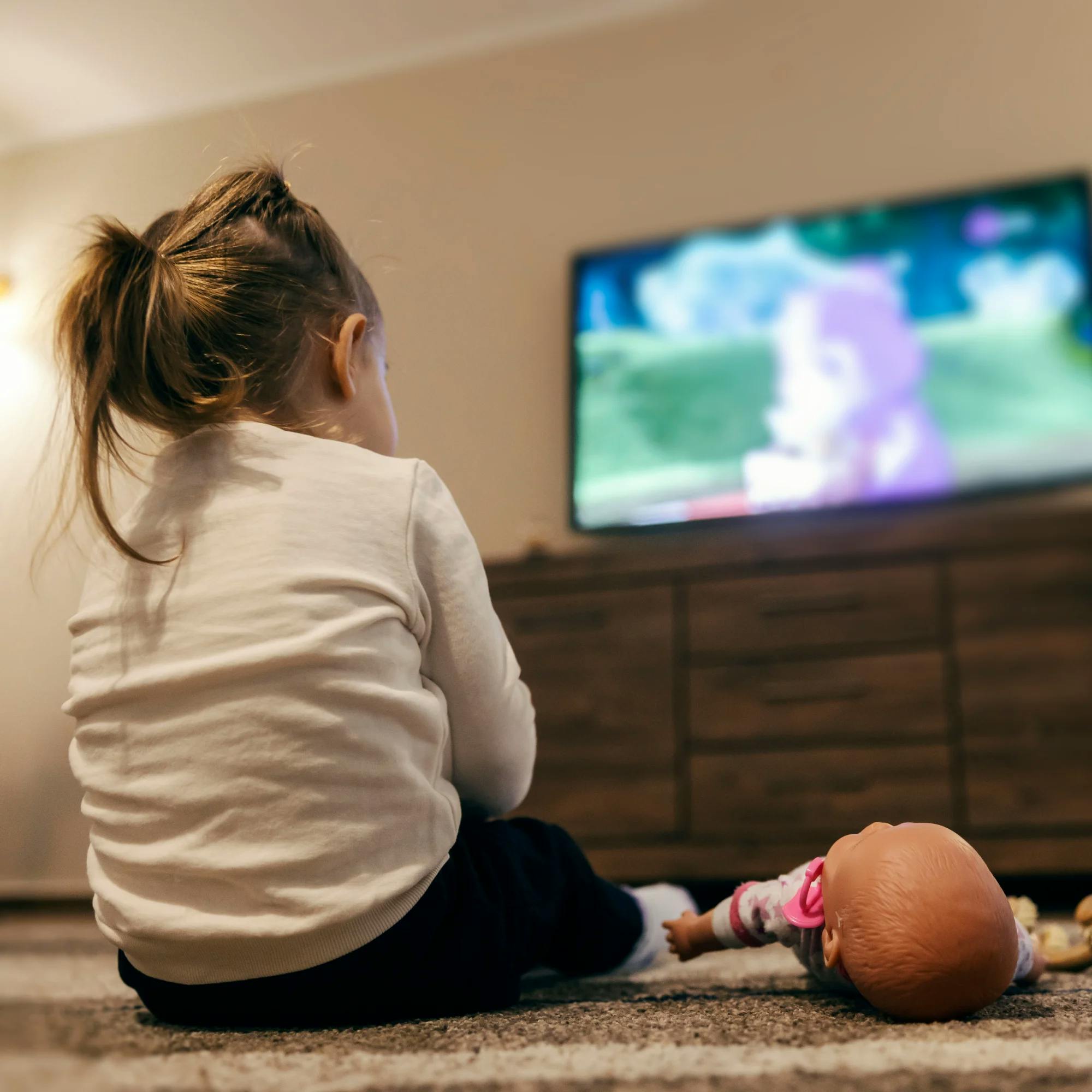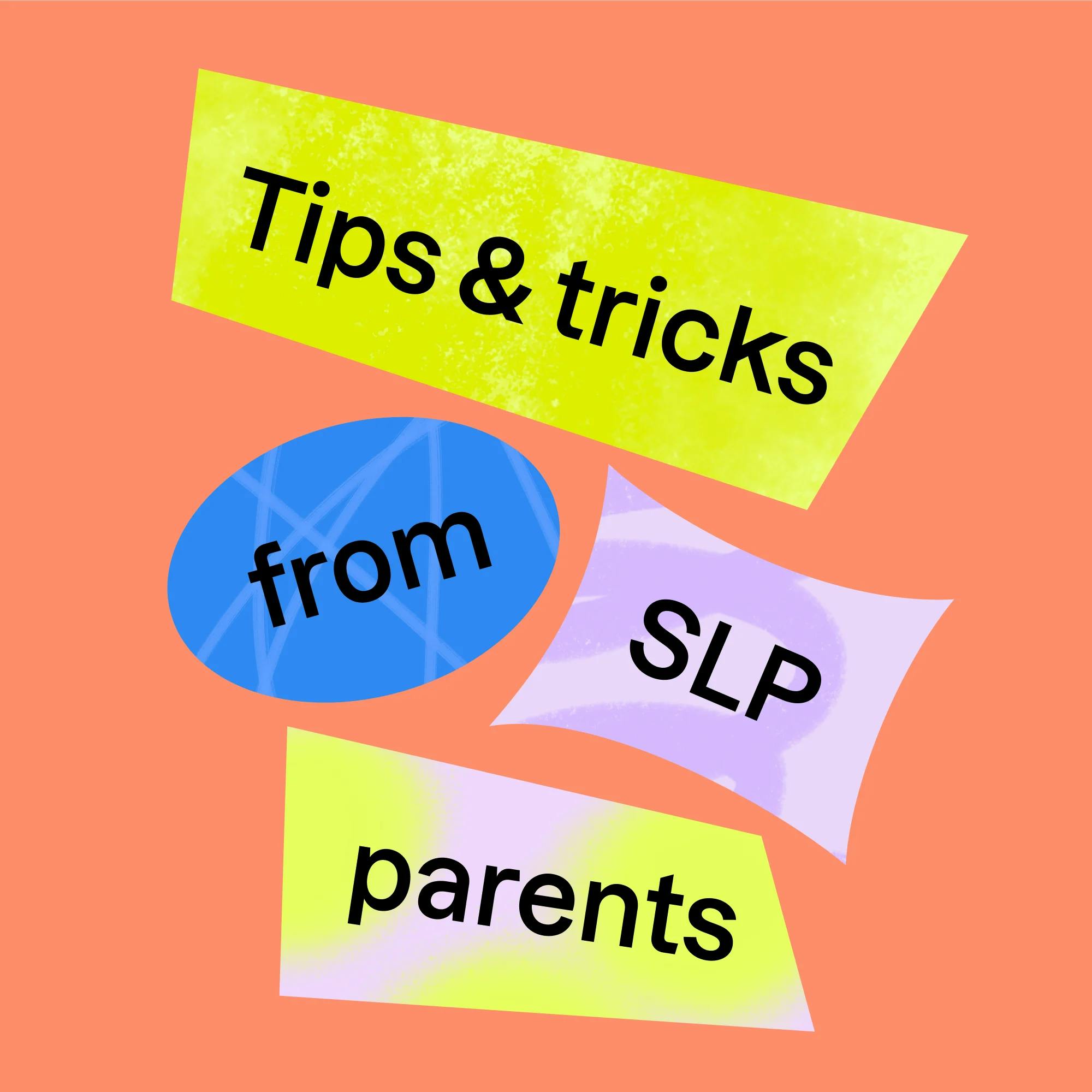
Room-by-Room Guide: Using Household Items to Help Your Child Learn to Talk
 Leanne Sherred, M.S., CCC-SLP
Leanne Sherred, M.S., CCC-SLP
You don’t need fancy toys or flashcards to help your child's speech and language development. Everything you need is already right at home!
Everyday household items offer lots of opportunities for language learning. From making faces in the mirror, to describing the food you're eating, these simple activities can go a long way in boosting your child’s communication skills.
Here’s our room-by-room guide to helping your child develop their speech and language skills at home.
Free speech check
How well is your child speaking for their age? Find out with our free 5-minute online screener. No signup required, just answers.
 Start the screener
Start the screenerIn the kitchen
Measuring cups and spoons: The possibilities are endless with these simple tools. You can build vocabulary by talking about words related to sizes and quantities. Here are some examples: “This is a tablespoon, and this is a teaspoon,” and “One cup is bigger than a half cup.”
Help your child learn to follow directions by giving simple instructions like, "Pour one cup of flour into the bowl." If you want to work on counting and numbers, ask your child to count the cups and spoons as they use them, such as “Can you give me two teaspoons?"
Food items: Encourage your child to name and describe different foods. Try, “This apple is green. How does it feel?...smooth!” You can even talk about how different foods are similar or different, like "The carrot is crunchy, but the banana is soft.”
One of our favorite tips is having your child help with simple recipes. This not only supports their comfort exploring new foods, but boosts their language skills as you describe each step. For example, you could say, "First, we wash the lettuce. Next, we chop it."
Quick demo: Try this with your picky eater
Watch hereMixing bowls and utensils: Grab your mixing bowls, whisk, spatula, and ladle to teach verbs related to cooking, such as "We are stirring the batter. Now we will pour it." Describe the textures and actions you experience in the kitchen, like "The dough is sticky. The soup is hot." Cooking together is a perfect time to engage your child in a back-and-forth conversation as well.
Timers and clocks: For your preschool child, you can begin introducing the concepts of time, waiting, and routine. Try setting a timer for 10 minutes and saying, “When the timer rings, the cookies will be ready.” Talk about the order in which things happen, too, like “First, we set the timer, then we clean up, and finally, we eat!”


In the bathroom
Mirror: Use a mirror to teach your child about different emotions and expressions, such as a happy face and a surprised face. Practice making different speech sounds in the mirror and encourage your child to look at your mouth. You might say, “Watch how my mouth moves when I say 'm' and 'p'.”
Towels and washcloths: While your child is in the tub, talk about how the towels feel: “The towel is fluffy. This washcloth is wet.” You can also teach colors and sizes using different towels–which one is bigger? Which one is green? Practice following directions by giving your child simple tasks, like “Can you hand me the blue towel?”
Bath products: Soaps and shampoos offer lots of opportunities to talk about smells and textures. Maybe your body soap smells like flowers, while the shampoo feels slippery. Try discussing the order you use each product as well, like “First, we use shampoo, then we use conditioner.” You can get as creative as you like here!


In the bedroom
Stuffed animals and dolls: Have “conversations” with stuffed animals while role-playing different scenarios, such as a tea party or a doctor’s visit. This can help your child practice dialogue, express emotions, and use more words.
Clothes: Use regular or dress-up clothes for imaginative playtime. Ask your child to describe what they are wearing (“I’m wearing a dress and a crown!”). Ask them who they are pretending to be (“I’m a princess”). This encourages your child to describe objects, tell stories, and use adjectives and verbs.


Storage bins: During clean-up time, have your child name and describe each toy they are putting away. For example, "This is a red car" or "I’m putting the teddy bear in the bin." This promotes descriptive language!
Bookshelf: Let your child choose a book and talk about why they chose it. Reading books together and talking about the stories, characters, and pictures helps develop their narrative skills and introduces new words. It’s a perfect way for the two of you to bond, too!
Quick demo: How to read a book to your child like a speech therapist
Watch hereIn the living room
Family photos: Look at family photos together. Talk about who is in each picture and what’s happening. This helps children practice describing people and events, and strengthens their ability to talk about past experiences.
Furniture: Use the furniture in your living space for obstacle courses or role-playing. Ask your child to describe the actions, such as "crawl under the table" or "sit on the couch.” This helps with understanding and using spatial concepts and action words.
As you can see, your home is a perfect learning environment! You can use everyday household items to stimulate your child’s curiosity and encourage them to explore. This expands your child's vocabulary without the need for costly toys.
Remember, try to stay patient and positive. We want these activities to be enjoyable for your child. Praise and encourage them, and make sure they know you recognize their hard work!
How Expressable Can Help
Concerned your child isn't reaching age-expected milestones? Looking for communication support from a professional? Expressable is a national online speech therapy practice serving children and adults. We treat all major areas of communication and feeding, offer flexible hours including evenings and weekends, and accept most major health insurance plans. We’re proud to have earned more than 3,000 5-star reviews from our clients (4.9/5 average).
Our therapy model is centered on parent and caregiver involvement. Research proves that empowering caregivers to participate in their loved one’s therapy leads to better outcomes. That’s why we combine live, 1-on-1 speech therapy with personalized education and home practice activities for faster progress.
Communication is more than words. It’s how we share how we feel and show who we are. We’re here to help you or your child do just that.













